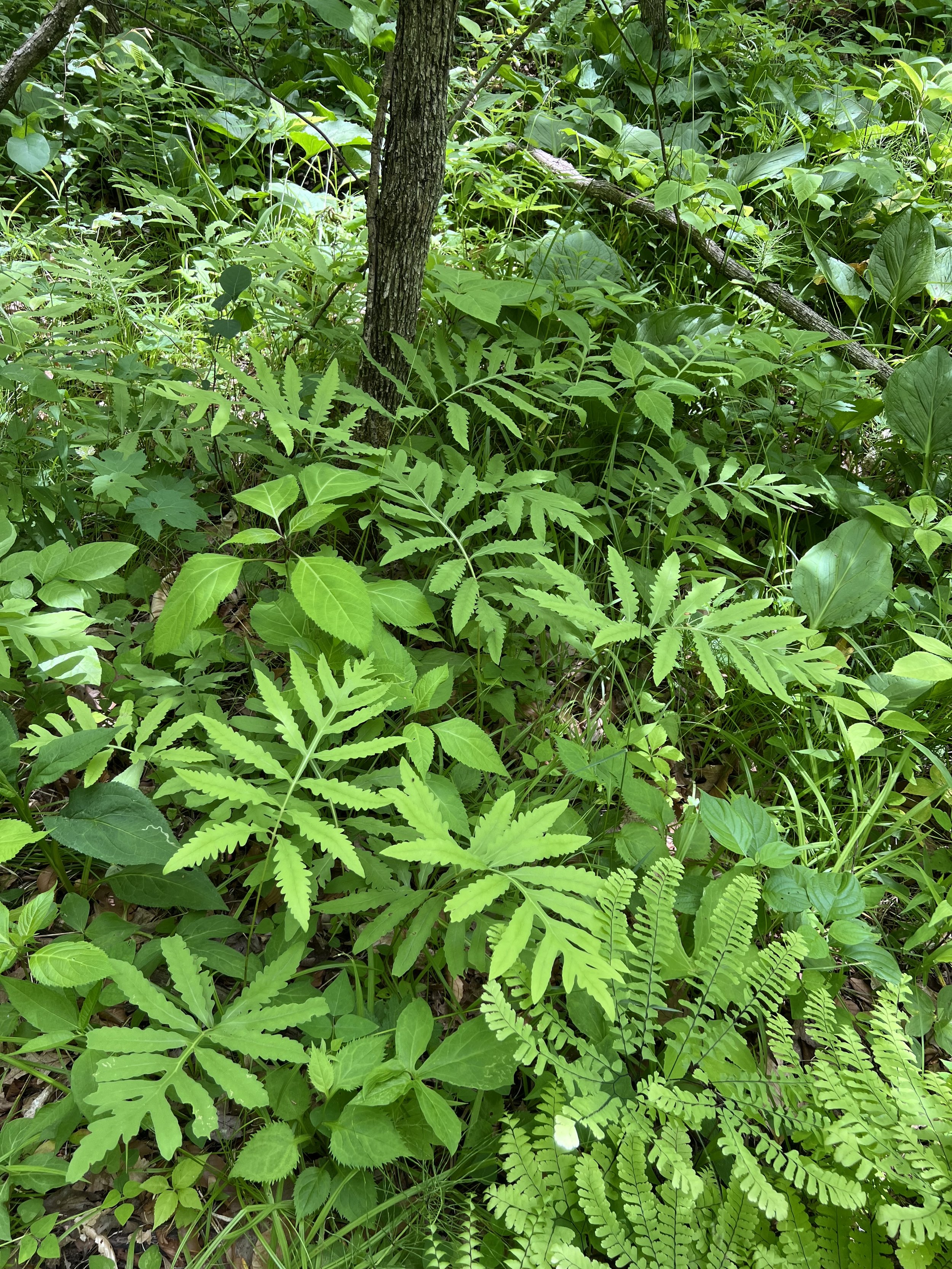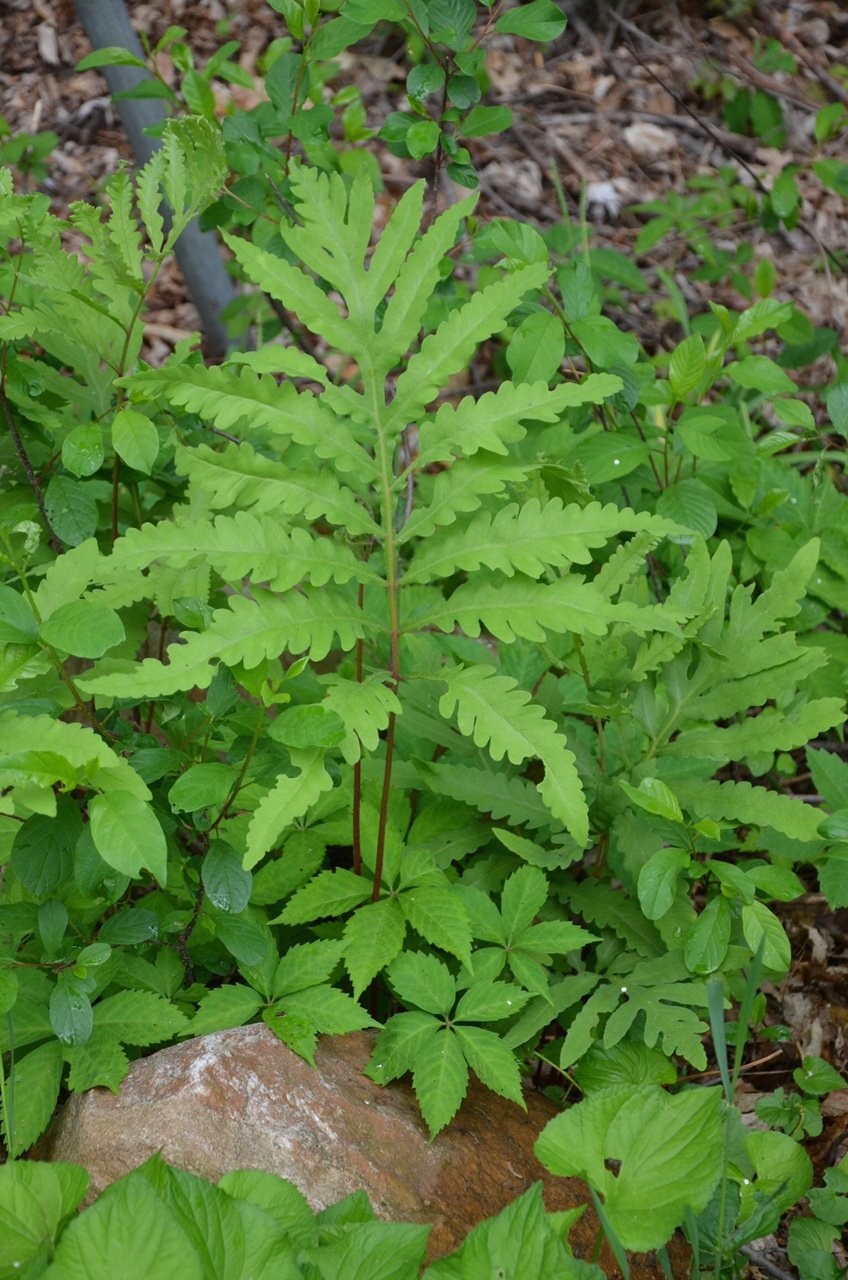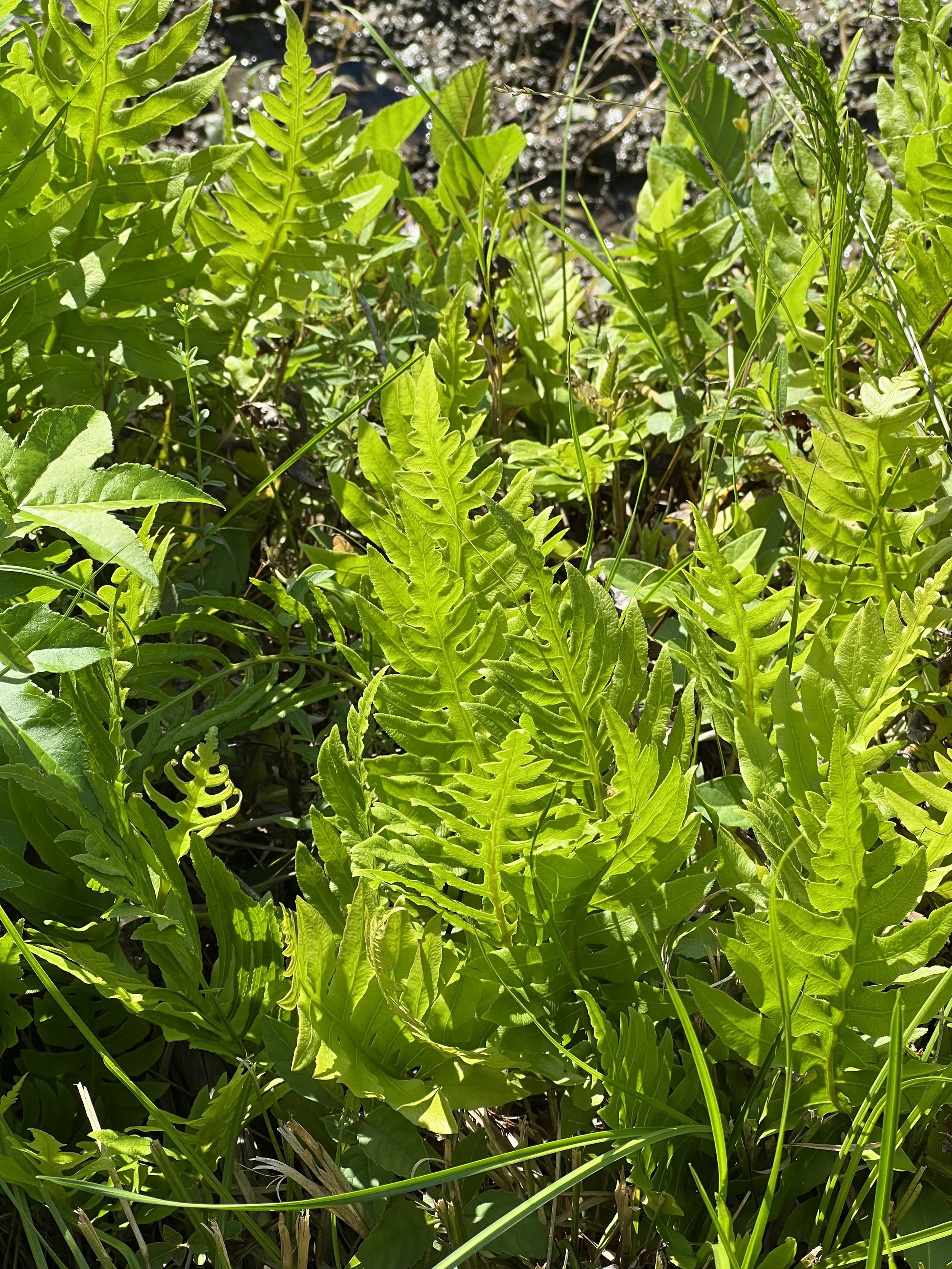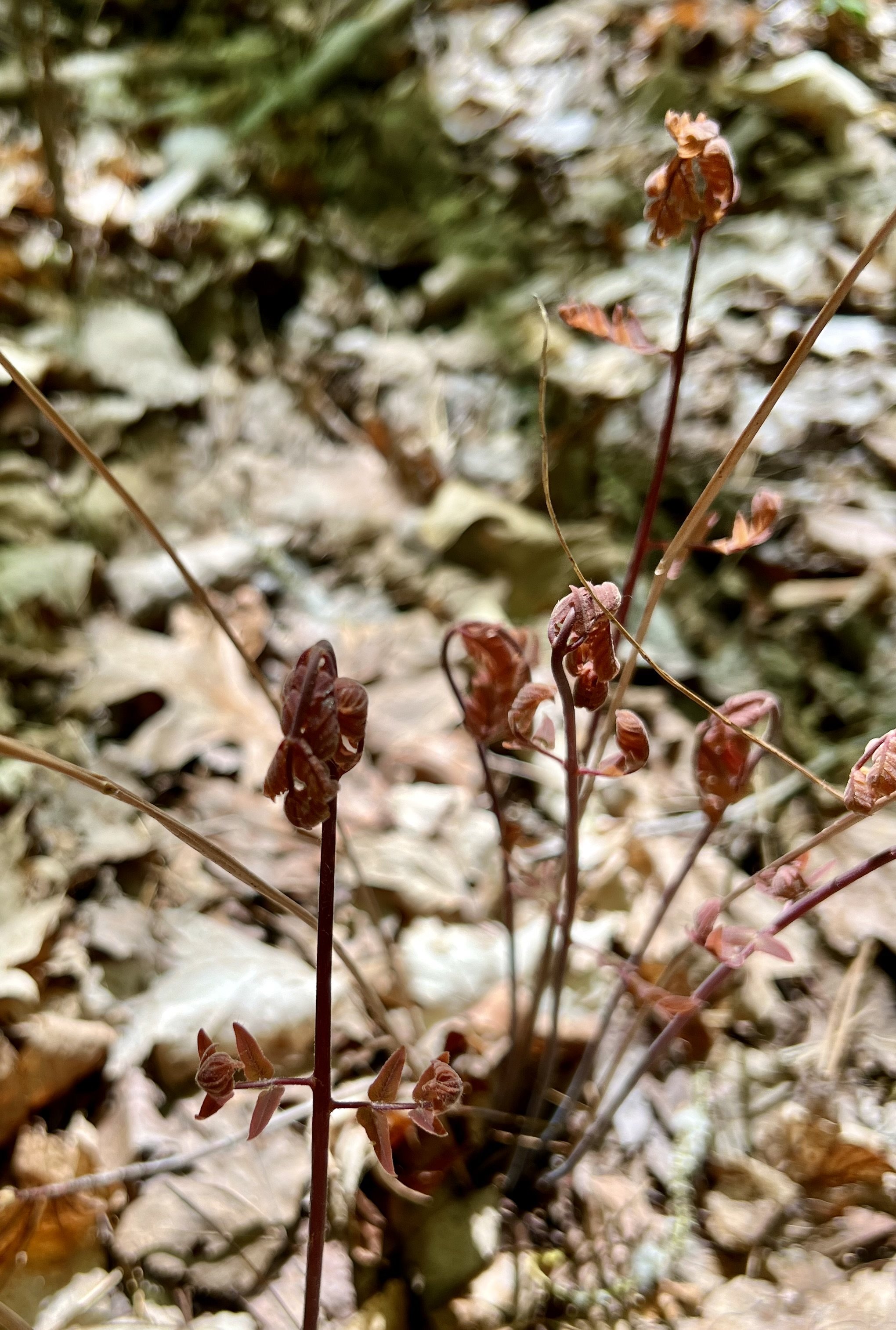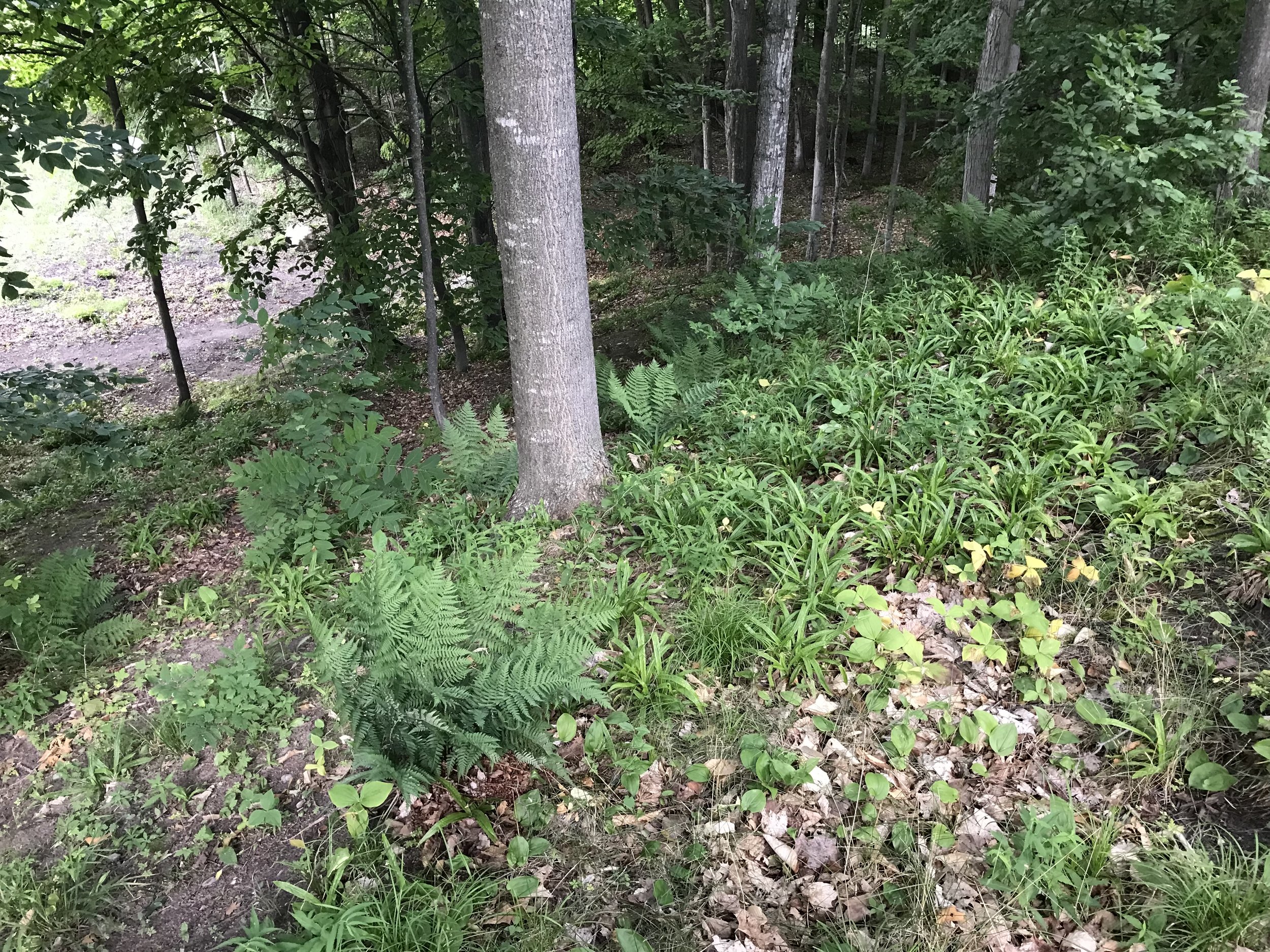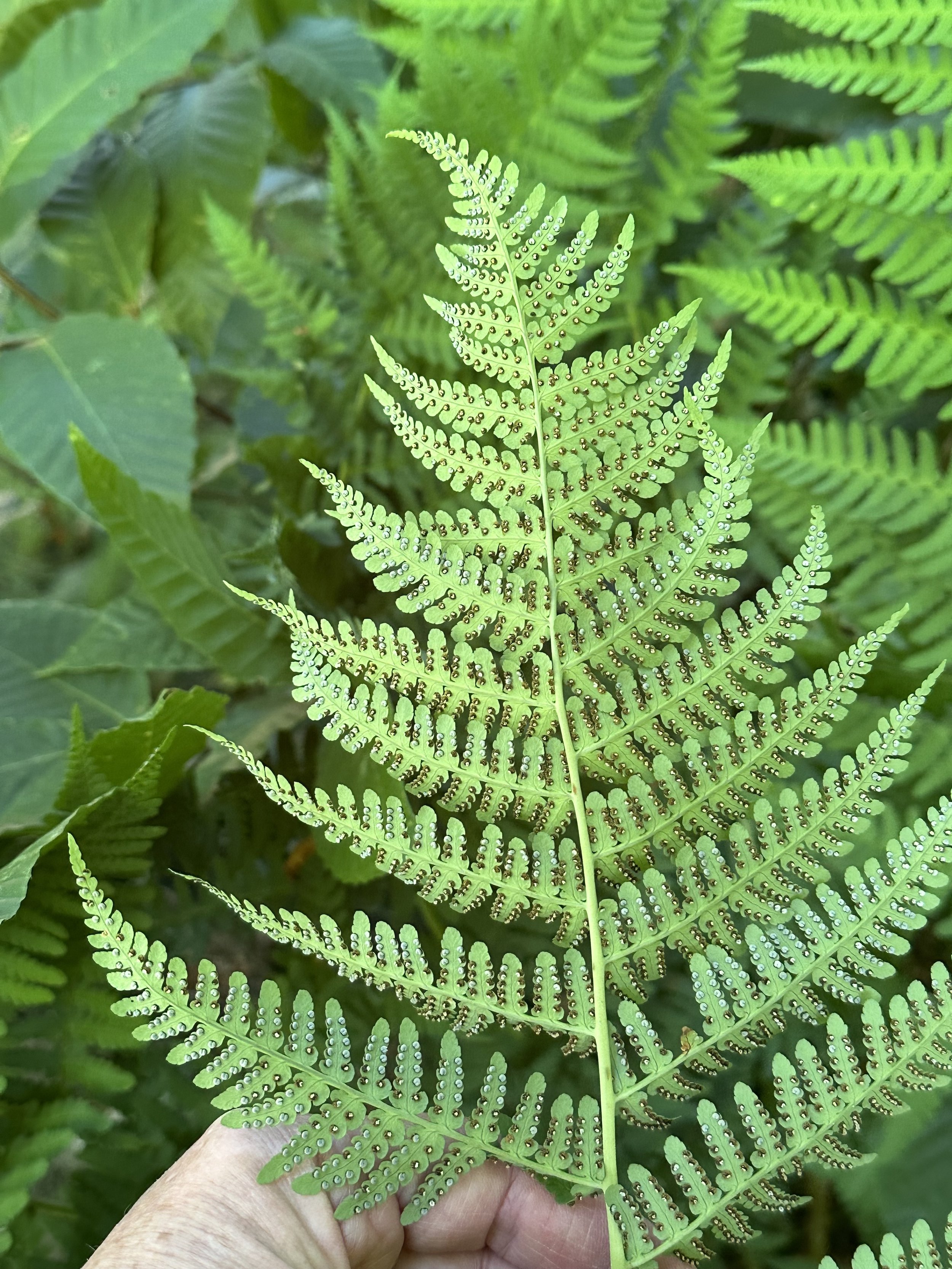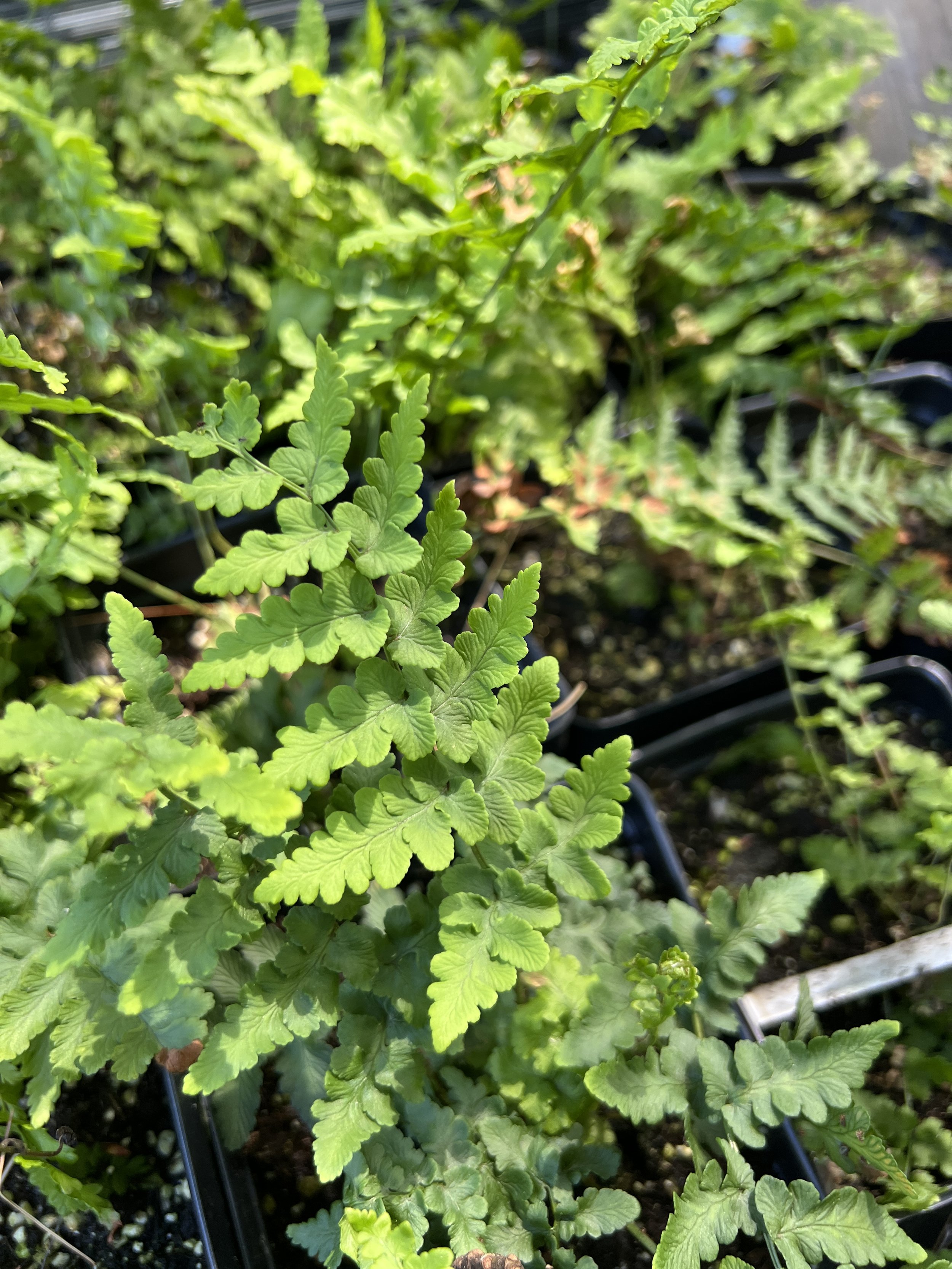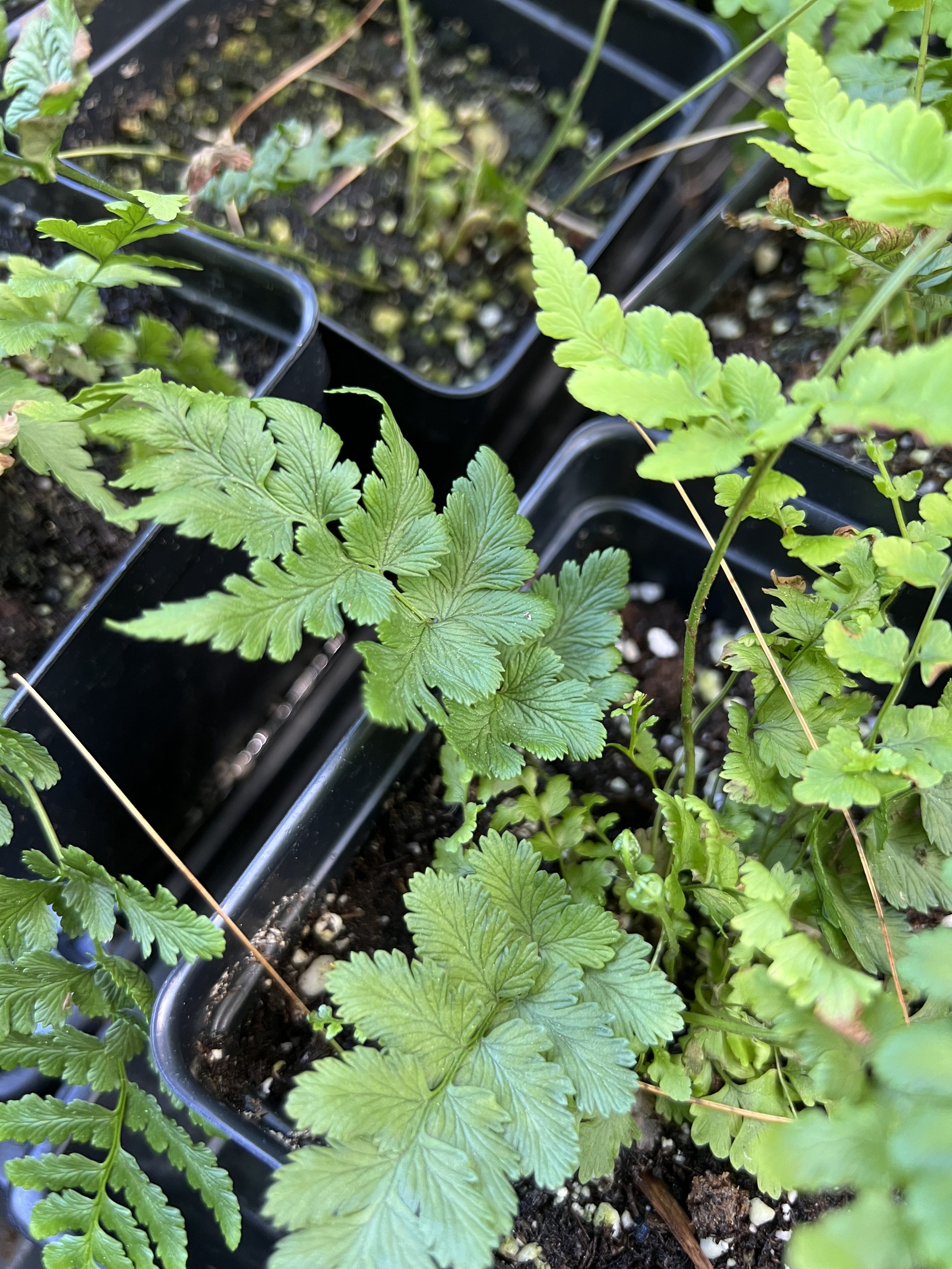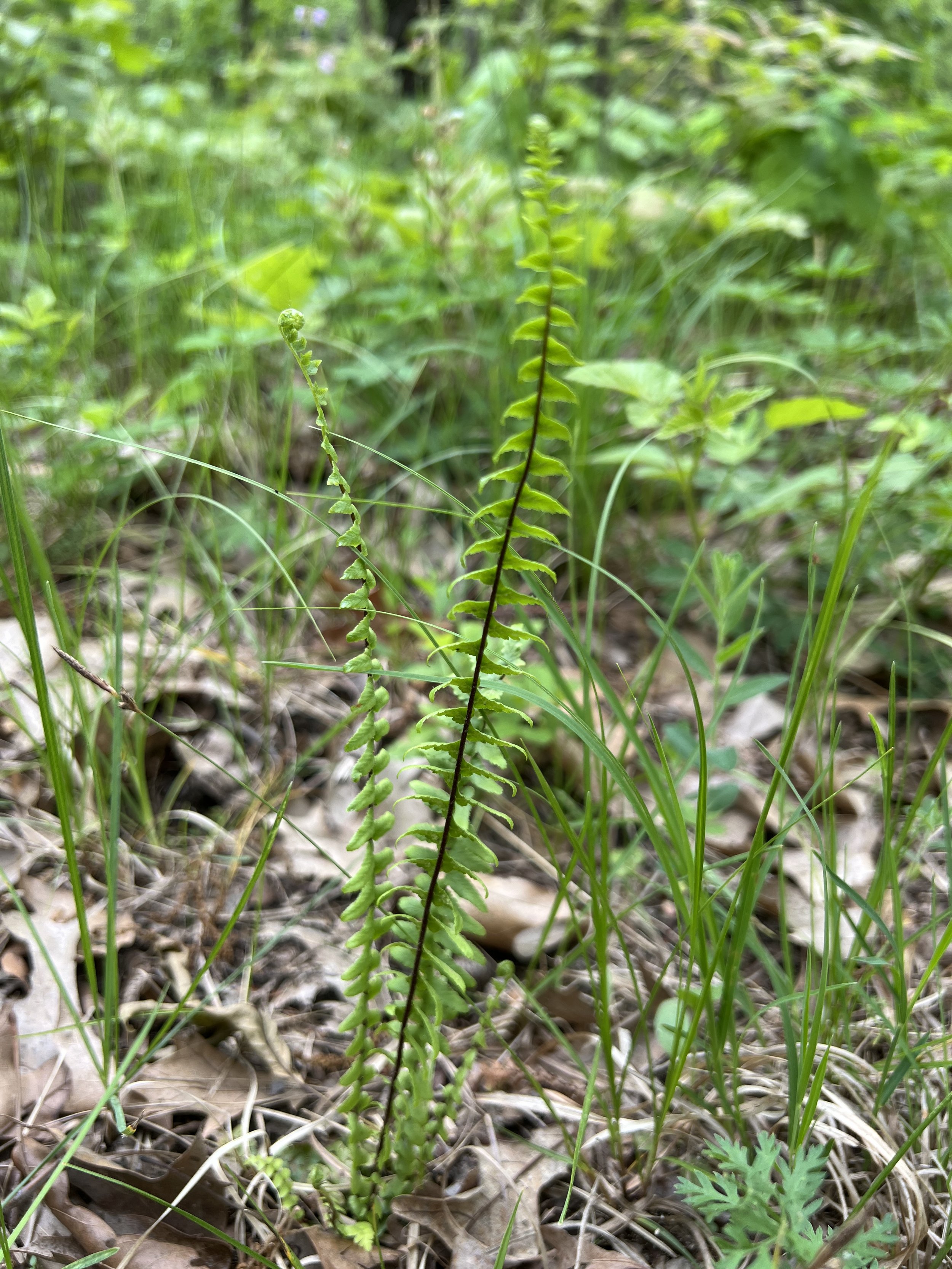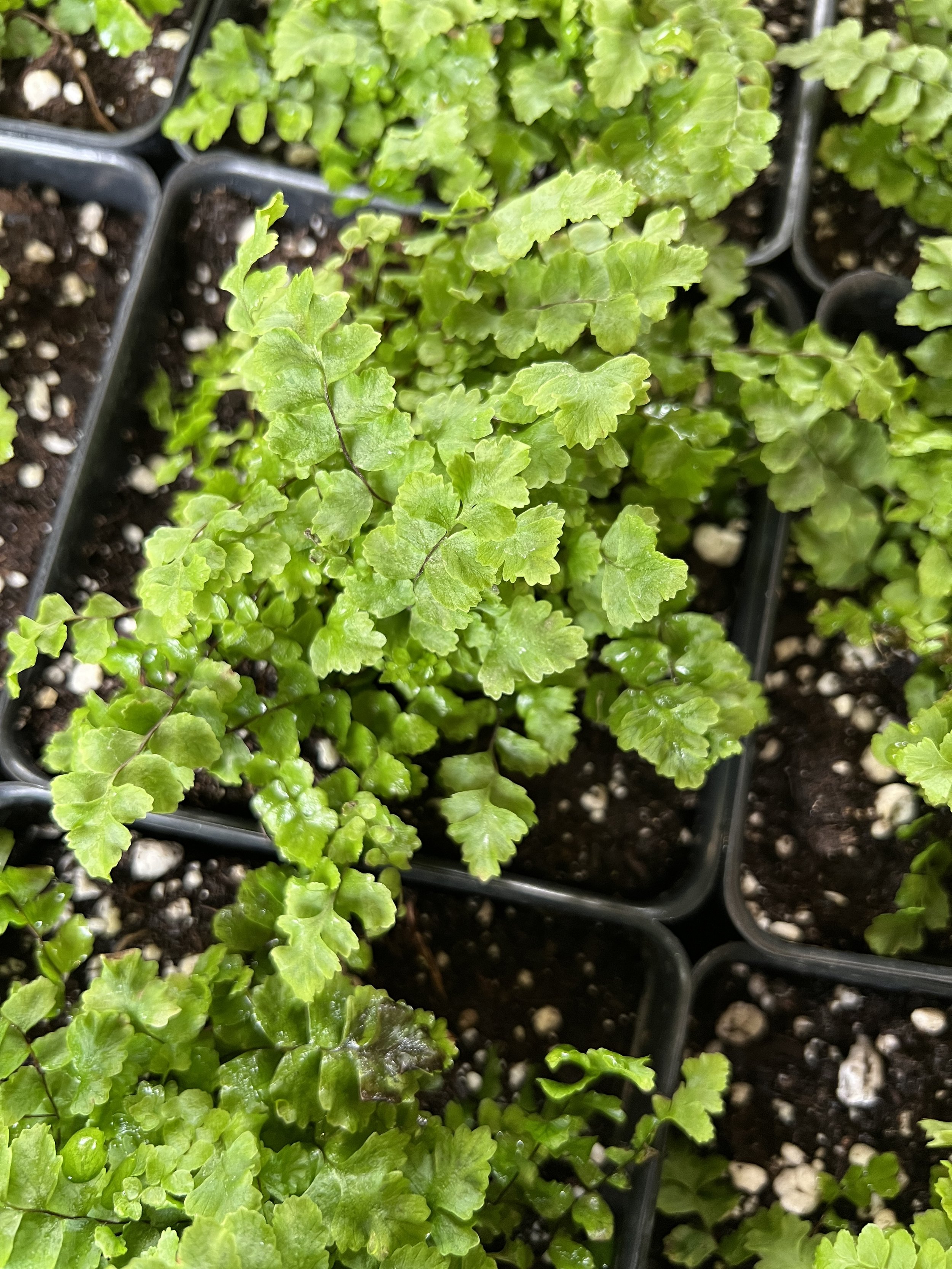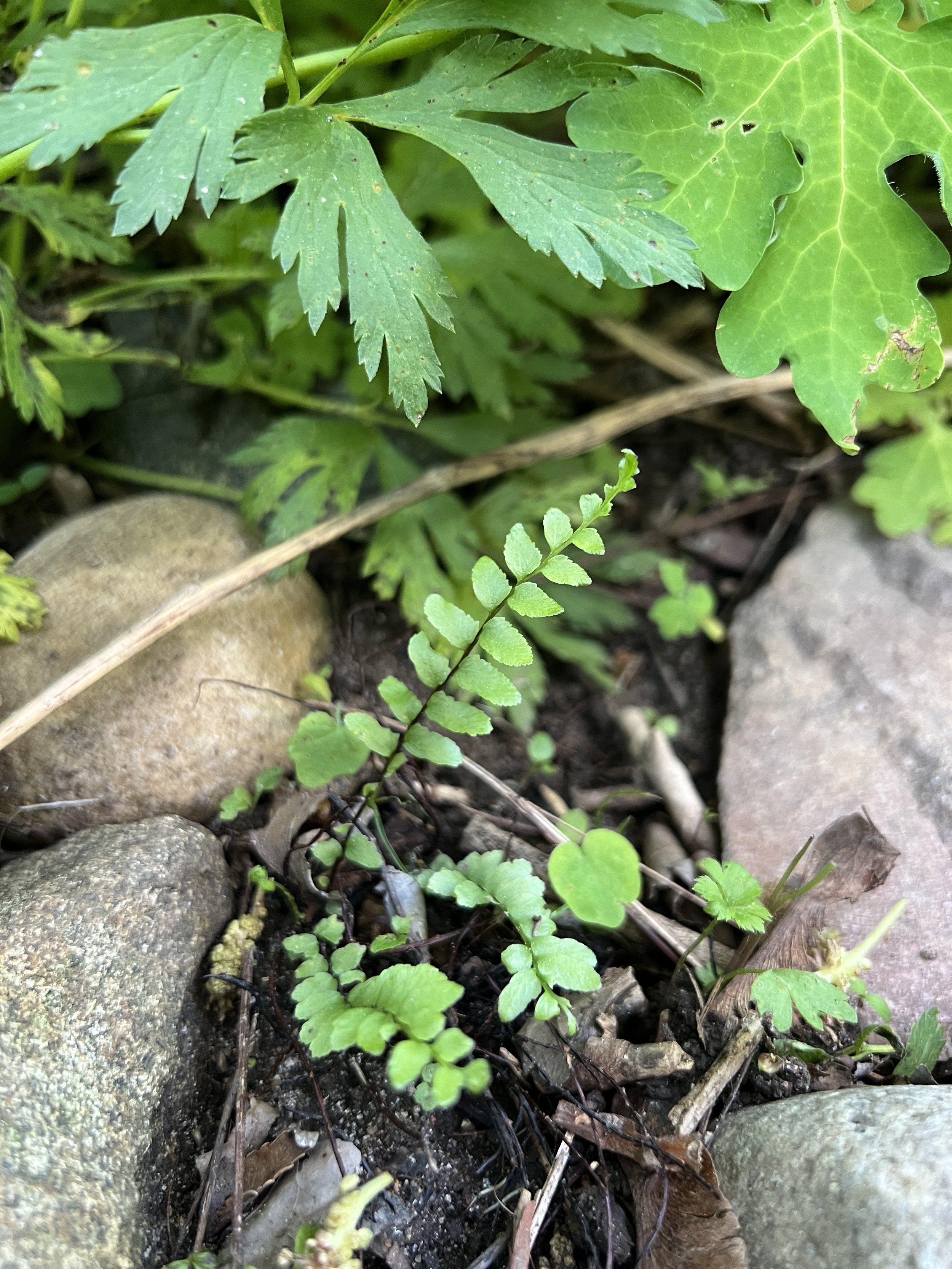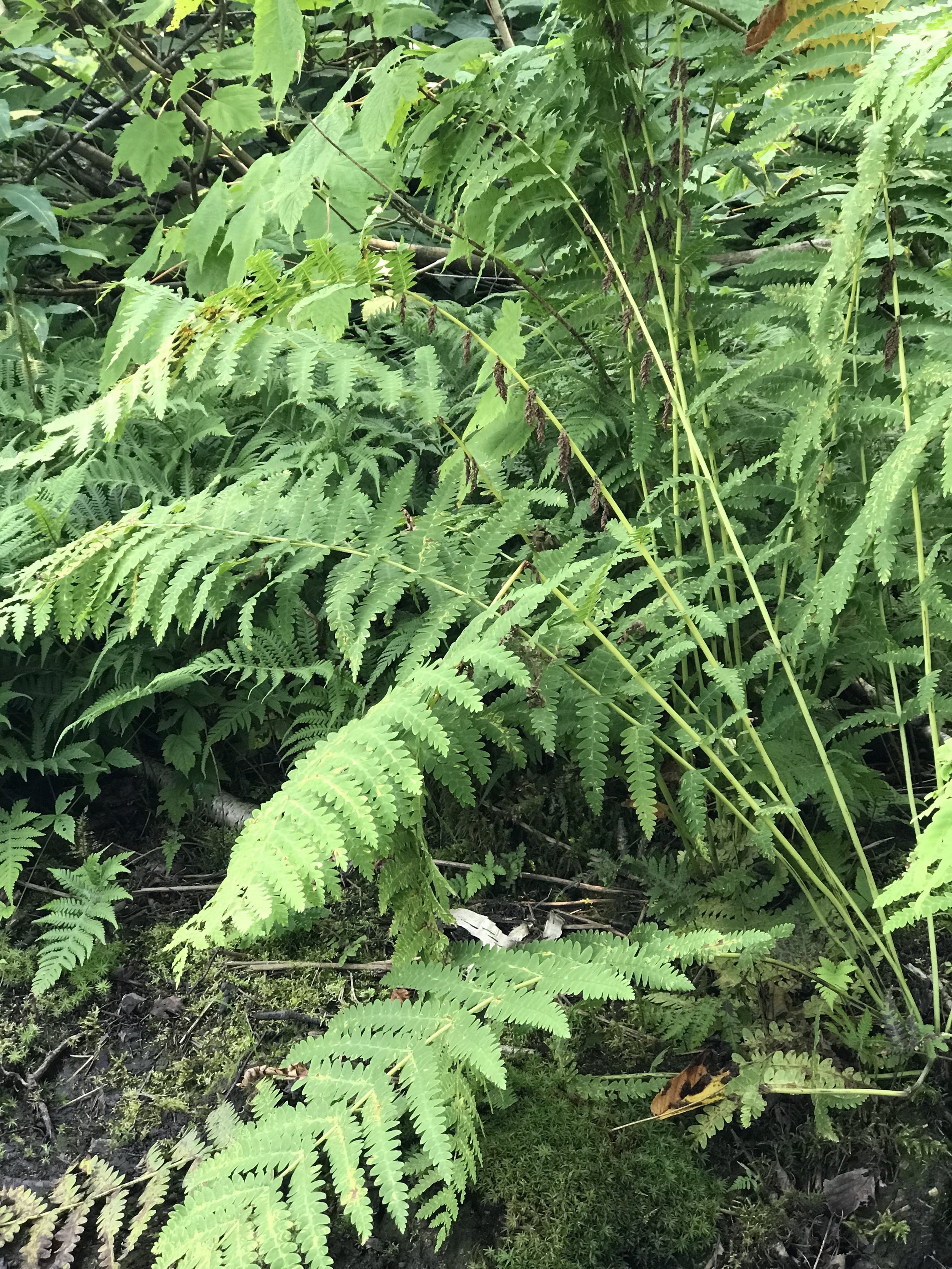 Image 1 of 4
Image 1 of 4

 Image 2 of 4
Image 2 of 4

 Image 3 of 4
Image 3 of 4

 Image 4 of 4
Image 4 of 4





Interrupted Fern (Osmunda claytonia)
from $5.00
Sold Out
Interrupted Fern is a large fern, 2-4 feet high, that looks similar to both Ostrich Fern and Cinnamon Fern. It has separate fertile fronds and infertile fronds that are long and tapering. The leaflets are also long and tapering. They have rounded lobes and if you look closely, there are forked veins.
Fertile fronds tend to stand up straight. About half way along the rachis (stem) of the fertile fronds, a few to several pairs of leaflets are covered in sporangia (the capsule that holds the spores). They start out green and turn dark and then they release the spores. Once this is accomplished, these leaflets wither away and fall off leaving a gap. This is where the name “interrupted” comes from. The whole plant dies back in the fall.
Interrupted Fern is found in wet forests and swamp edges throughout the state of Michigan, though it is not as common as Ostrich Fern. It likes dappled sunlight or shade, and sandy, somewhat acidic soil. Illinois Wildflowers mentions that it likes humidity and needs protection from strong winds.
Interrupted Fern (Osmunda claytonia)
Michigan Flora reference page for state distribution: Interrupted Fern
height: 2-4 feet
soil: medium-wet
sun: dappled shade, shade
plant spacing: 3’
life cycle: perennial
family: Osmundaceae
Sizes:
Get notified by email when this product is in stock.
Interrupted Fern is a large fern, 2-4 feet high, that looks similar to both Ostrich Fern and Cinnamon Fern. It has separate fertile fronds and infertile fronds that are long and tapering. The leaflets are also long and tapering. They have rounded lobes and if you look closely, there are forked veins.
Fertile fronds tend to stand up straight. About half way along the rachis (stem) of the fertile fronds, a few to several pairs of leaflets are covered in sporangia (the capsule that holds the spores). They start out green and turn dark and then they release the spores. Once this is accomplished, these leaflets wither away and fall off leaving a gap. This is where the name “interrupted” comes from. The whole plant dies back in the fall.
Interrupted Fern is found in wet forests and swamp edges throughout the state of Michigan, though it is not as common as Ostrich Fern. It likes dappled sunlight or shade, and sandy, somewhat acidic soil. Illinois Wildflowers mentions that it likes humidity and needs protection from strong winds.
Interrupted Fern (Osmunda claytonia)
Michigan Flora reference page for state distribution: Interrupted Fern
height: 2-4 feet
soil: medium-wet
sun: dappled shade, shade
plant spacing: 3’
life cycle: perennial
family: Osmundaceae
